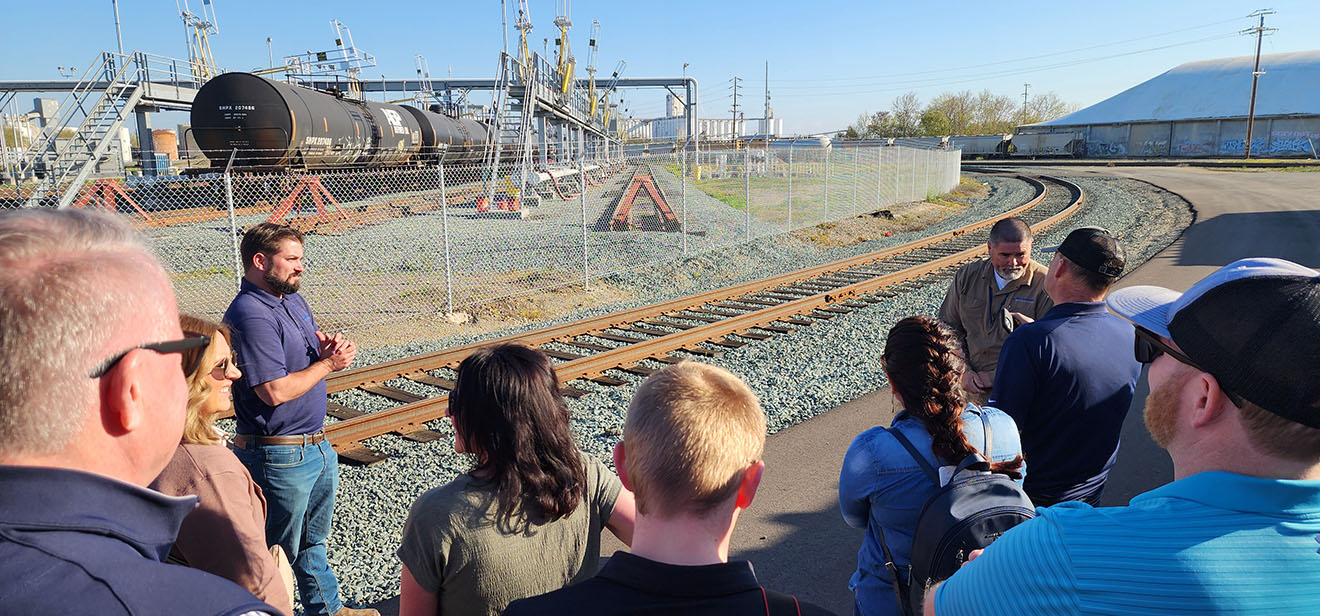
(Photo credit: Iowa Soybean Association/Aaron Putze)
Idealism vs Reality: Winner to determine fate of biofuels in California
April 2, 2025 | Aaron Putze, APR
California is a tale of two states for biofuels proponents.
On the one hand, it’s home to nearly 40 million people operating millions of vehicles. Efforts to reduce air pollution via the state’s Low Carbon Fuels Standard (LCFS) have driven demand for biomass-based fuels. Just 15 years ago, less than 1% of California’s diesel inventory included biodiesel and renewable diesel. Today, renewable fuels account for more than 70% of the state’s diesel fuel supply and nearly half of California’s greenhouse gas reductions under the LCFS.
Yet on the other, California is intensifying efforts to achieve carbon neutrality by 2045. To get there, the state is pursuing policies and practices phasing out the use of liquid fuels in favor of electrification. The California Air Resources Board (CARB), a 16-member agency overseeing the state’s air pollution control efforts, is guiding the transition.
Last November, CARB revised the state’s LCFS by implementing a 20% limit on credit generation for biomass-based diesel made from virgin crop oils such as soybean, canola and sunflower-seed oils. The move unsettled the biofuels market, as CARB also proposed to lower the carbon intensity of California’s transportation fuel pool by 30% by 2030 and 90% by 2045.
“The long-term impact of these changes is a significant reduction in demand for soy-based fuel from our most important domestic market,” says Jeff Ellis, Iowa Soybean Association District 9 director. “That’s concerning, especially given California’s national and global influence in energy and environmental policy.”
Ellis was one of several Midwest soybean farmers who met with CARB board and regulatory officials during a biofuels market tour to Sacramento March 24-27. Organized by Clean Fuels Alliance America, the tour provided constructive dialogue regarding the LCFS while making the case for the long-term benefits of soy-based biofuels.
Embracing electric
California’s embrace of electrification is driven by concerns that biobased fuels harm people and the environment by incentivizing destructive land use changes and elevating food costs by diverting edible oil from food to energy.
Greg Mayeur, CARB’s program planning and management branch chief, told the farmer delegation that capping the use of biofuels balances the needs of biofuels proponents with that of the environmental justice community.
“They’re requiring us to move more quickly to electrification to meet our goals,” he said. “There is a general concern that we are taking food crops and using it for fuel rather than for animals or food and human consumption.
“This is a global, not just local, effort to ensure there are enough of these crops available to feed the people who need fed.”
Soybean farmers participating in the discussions sought to alleviate those concerns while acknowledging the mutually beneficial partnerships between U.S. soybean farmers and California. These efforts have had an immediate and positive impact on air quality in America’s most populous state.
“Concerns voiced by environmental justice groups aren’t based on reality,” said Ellis. “They also penalize U.S. farmers by lumping us in with other soybean-producing countries.”
The farmer from Donnellson said it’s unfair and inaccurate to compare the environmental footprint of soybeans grown in Iowa and the U.S. with oilseeds produced in Brazil and South America.
“We’re not clearing land to grow soybeans,” he said, “We’re producing more soybeans on fewer acres while implementing numerous practices that improve soil and water quality.”
Domestic biofuels production has created a market for soybean oil, a product once considered “waste” because it existed in such large quantities.
Ignoring reality
Aspirations to fully electrify California’s vehicle fleet in less than 10 years are highly attractive to policy makers and the environmental justice community.
But they ignore the realities of a strained electrical grid and electricity prices already 2-3 times the national average.
Eric Guerra, a 3-year CARB board member, admits agriculture’s role in the state’s energy sector has been positive.
“Clearly, biofuels are healthier for petroleum-based fuels and have played an important role in getting to cleaner air faster,” he said.
Improving air quality is an acute priority for California’s sixth largest city (pop. 529,000). Sacramento is situated within a geographical bowl making it susceptible to high concentrations of particulate matter originating from vehicle emissions and forest fires.
“The big issue we still have today is helping children with asthma, especially during the summer,” Guerra said. “Going to biofuels has been helpful while progressing to carbon neutral goals.”
California Gov. Gavin Newsom has directed the state to redouble efforts to scale up electric and non-combustible energy use during his remaining two years in office. Regulatory officials have responded by incentivizing electric vehicle sales, codifying the availability of electric charging stations in the construction of fueling stations and condominiums and exploring increased production and use of hydrogen.
“It’s a matter of when, not if, people will purchase an electric vehicle,” Guerra said. “There’s idealism and optimism. The idealism is very pervasive in the legislative arena.”
As the transition from liquid fuel to electric continues, Guerra and Mayeur say biofuels will continue to be an important energy option for Californians.
“Battery technology will get better but it’s not addressing the air quality needs of today,” Guerra said. “In the meantime, we’ll need agriculture’s contribution to our fuel needs.”
Ellis says farmers and biofuels advocates must continue to show up in Sacramento to make the case for soy-based biofuels to CARB officials and lawmakers.
“We have the best product for making cleaner air today,” he said. “And it’s likely the realities of trying to go 100% electric in a state like California will keep biofuels an important option for decades to come.”
Putze serves as ISA Chief Officer, Brand Management & Engagement.
Back